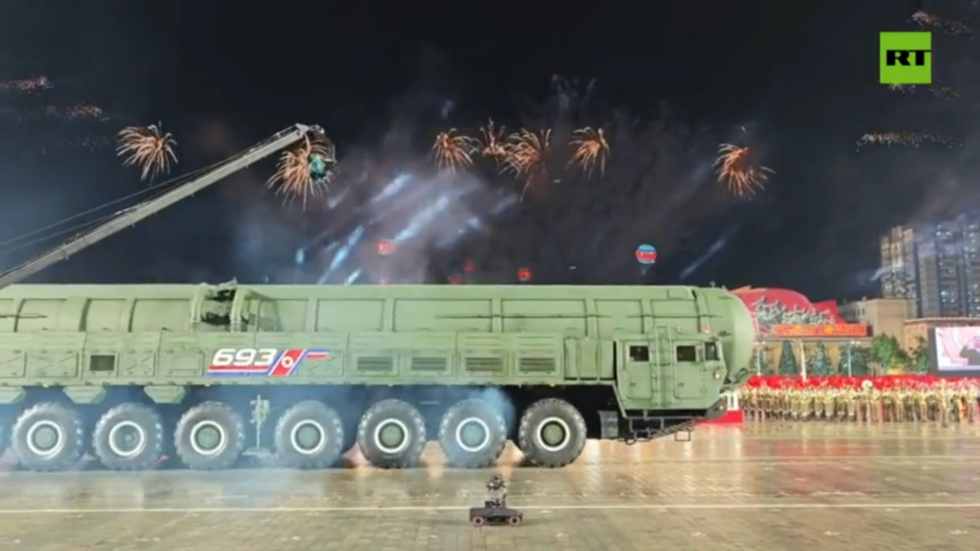North Korea has unveiled its latest intercontinental ballistic missile, the Hwasong-20, during a military parade in Pyongyang. The event, marking the 80th anniversary of the founding of the country’s ruling Workers’ Party, showcased the nation’s newest weapons systems. The Hwasong-20, described by state media as North Korea’s “most powerful nuclear strategic weapon system” to date, is potentially capable of reaching the continental US.
The missile was debuted alongside other advanced military equipment, including drones, tanks with electronic warfare gear, and hypersonic missiles. The Hwasong-20 was mounted on an 11-axle transporter-launch vehicle, highlighting its massive size. The existence of the missile was only revealed last month, when North Korea tested a new solid-fuel rocket engine intended for its next generation of ICBMs.
Solid-fueled rockets can be transported and launched more quickly than their liquid-fueled counterparts, making them harder to intercept. According to state media, the carbon-fiber-built engine is more powerful than any previous North Korean design. However, little is known about the Hwasong-20’s specifications, and Pyongyang has not yet announced a test launch.
Experts believe the missile may be capable of carrying multiple nuclear warheads, a goal that North Korean leader Kim Jong-un has repeatedly urged the military to pursue. North Korea views its pursuit of advanced arms as a response to ongoing Western military threats, particularly from the US. The country sees its nuclear and missile programs as essential deterrents against foreign interference, insisting that the arsenal is purely defensive and meant to protect national sovereignty.
The unveiling of the Hwasong-20 comes as tensions between North Korea and the US remain high. Pyongyang has long viewed the US presence in South Korea and joint military drills as aggressive in nature. The international community will be closely watching North Korea’s next steps, particularly whether the country will conduct a test launch of the Hwasong-20. The development of the missile has significant implications for regional and global security, and its potential capabilities will likely be a major concern for the US and its allies.
